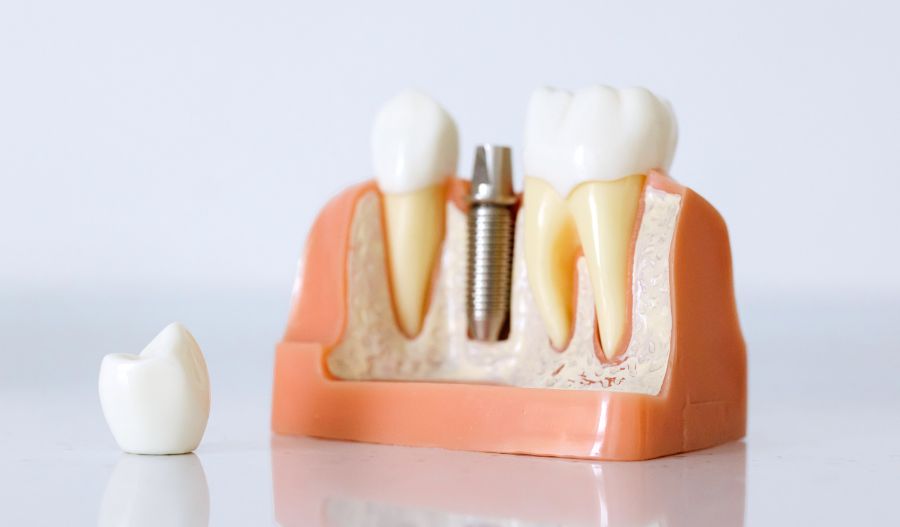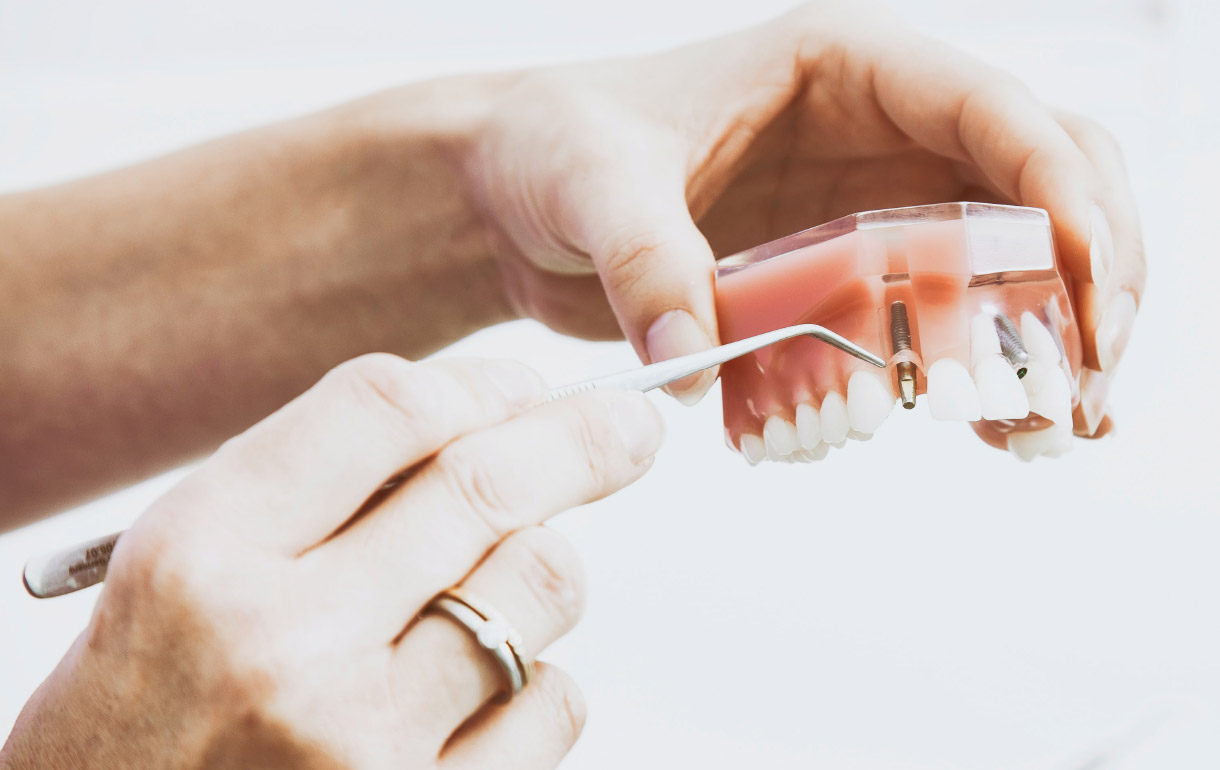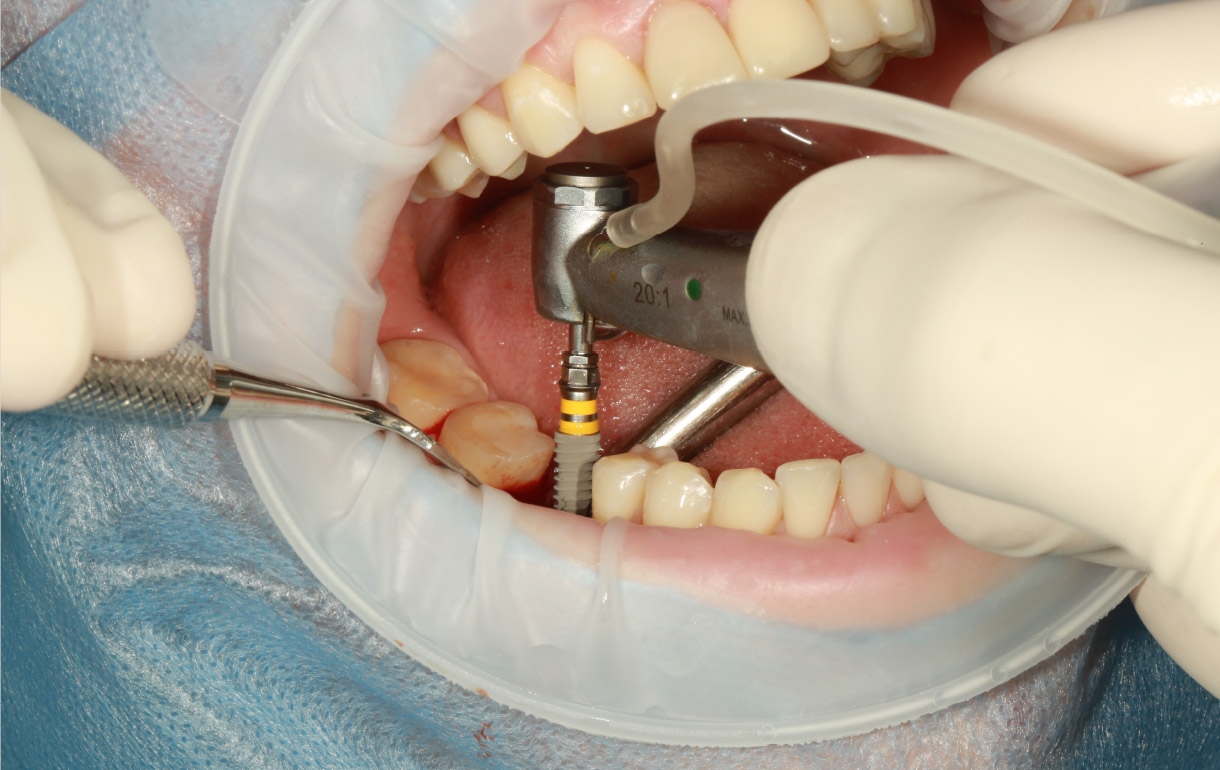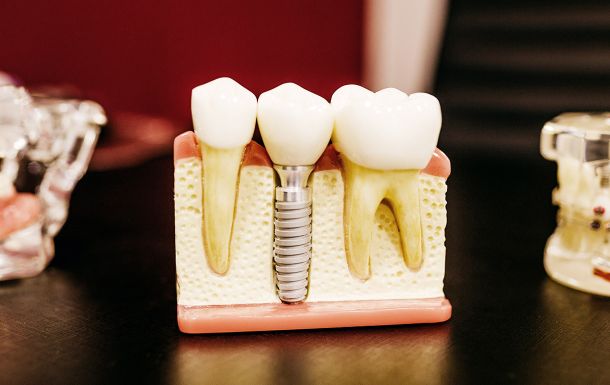Why an Implant Might Be Necessary
Dental implants become a necessary solution in various situations where tooth loss or replacement is required. Whether caused by decay, injury, or other dental issues, missing teeth can lead to functional, aesthetic, and even oral health concerns. Implants offer a durable and natural-looking alternative by providing a solid foundation for restorations. They can restore not only your smile’s appearance but also its functionality, allowing you to eat, speak, and laugh confidently. Additionally, implants prevent bone loss in the jaw, maintaining the structural integrity of your facial features. When it comes to addressing tooth loss, implants serve as a reliable, long-term solution that enhances both your oral health and quality of life.
The Procedure
The dental implants procedure is a multi-step process that involves precision and expertise. First, a comprehensive evaluation of your oral health is conducted to determine your candidacy for implants. If suitable, the treatment plan is tailored to your specific needs. The actual procedure begins with the surgical placement of the titanium implant into the jawbone. Over time, the implant fuses with the bone through a process called osseointegration. Once integration is complete, an abutment is attached to the implant, which serves as a connector for the final restoration. Finally, a custom-made crown is affixed to the abutment, blending seamlessly with your natural teeth. Throughout the process, our skilled team ensures your comfort and safety, aiming to provide you with a restored smile that feels and functions naturally.
Bone Preparation
Bone preparation is a vital preliminary step in the dental implant process. It involves assessing the quality and quantity of the jawbone at the implant site. In cases where the bone lacks sufficient density or height, bone augmentation techniques may be employed to create a stable foundation for the implant. These techniques could include bone grafting or sinus lift procedures. Adequate bone structure is essential for successful implant placement, as it ensures the implant integrates securely and provides a strong support for the eventual restoration. Our experienced professionals carefully evaluate and, if necessary, prepare the bone to optimize the chances of a successful and long-lasting dental implant outcome.
Placing the Dental Implant
Placing the dental implant is a precise and meticulous procedure that anchors the foundation of your new tooth. During this step, a small incision is made in the gum tissue to access the jawbone. A titanium implant, resembling a screw, is then carefully inserted into the bone. This implant serves as a substitute for the tooth root, providing stability and support for the eventual restoration. The area is then sutured, allowing the healing process to begin. Over the coming weeks, the implant gradually fuses with the bone through a natural process called osseointegration. This integration ensures a strong bond between the implant and the jawbone, creating a stable base upon which a lifelike crown can be securely placed. Our skilled team performs implant placement with precision and care, aiming to provide you with a resilient and functional solution for your missing tooth.
Healing Period
The healing period following dental implant placement is a crucial phase in the overall process. During this time, osseointegration occurs as the implant fuses with the surrounding jawbone. This integration ensures a solid and stable foundation for the final restoration. While individual healing times vary, it typically takes several weeks for osseointegration to complete. Throughout this period, it’s important to follow post-operative instructions provided by our team to optimize the healing process. Once osseointegration is successful, the next steps of attaching the abutment and crown can be taken, bringing you closer to enjoying a fully functional and aesthetically pleasing new tooth. Your patience during the healing period contributes to the long-term success of your dental implant and the enhanced quality of your smile.
Placing the Abutment
Placing the abutment is a crucial step that follows the osseointegration phase of dental implant treatment. This component acts as a connector between the implant post and the final restoration. To place the abutment, a small incision is made in the gum tissue to expose the implant. The abutment is then attached securely to the implant, protruding above the gumline. This step is pivotal as it creates the foundation upon which your custom-made crown will be affixed. The abutment ensures a snug fit and natural alignment for the restoration. Our experienced clinicians meticulously perform this procedure to ensure both functionality and aesthetics, bringing you one step closer to a complete and confident smile.
Placing the Crown
The final step in the dental implant process is placing the crown, which completes your newly restored smile. Once the abutment is securely in place, impressions are taken to create a custom-made crown that matches the color, shape, and size of your natural teeth. This crown is meticulously crafted in a dental laboratory to ensure a seamless integration with your existing dentition.
When ready, the crown is attached to the abutment with precision, creating a strong and natural-looking replacement for your missing tooth. The result is a fully functional and aesthetically pleasing restoration that blends seamlessly with your smile. Our dedicated team ensures that the crown is placed with utmost care, providing you with the confidence to enjoy your restored smile for years to come.
Follow-up Treatment
After the successful placement of your dental implant and restoration, our commitment to your oral health continues with follow-up treatments. Regular check-ups allow us to monitor the progress of your implant, ensuring its stability and integration with the surrounding tissues. We’ll also provide guidance on proper oral hygiene practices to maintain the health of your implant and surrounding teeth. Our team is here to address any questions or concerns you may have during your recovery and beyond. By prioritizing follow-up treatments, we aim to ensure the longevity and success of your dental implant, allowing you to enjoy the benefits of a confident and functional smile for years to come.
Contraindication and Risks
While dental implants are a highly effective and safe tooth replacement option, there are certain contraindications and associated risks to consider. Contraindications may include inadequate jawbone density, certain medical conditions, or a compromised immune system. It’s crucial to undergo a thorough evaluation to determine if you’re a suitable candidate for dental implants. Risks associated with the procedure include infection, implant failure, nerve damage, and potential discomfort during the healing process. However, these risks are relatively rare and can be minimized through proper patient selection, meticulous planning, and expert execution by our experienced team. Before proceeding with dental implant treatment, our clinicians will discuss your medical history, conduct comprehensive assessments, and provide you with all the necessary information to make an informed decision about the procedure. Your safety and well-being are our top priorities throughout your dental implant journey.







